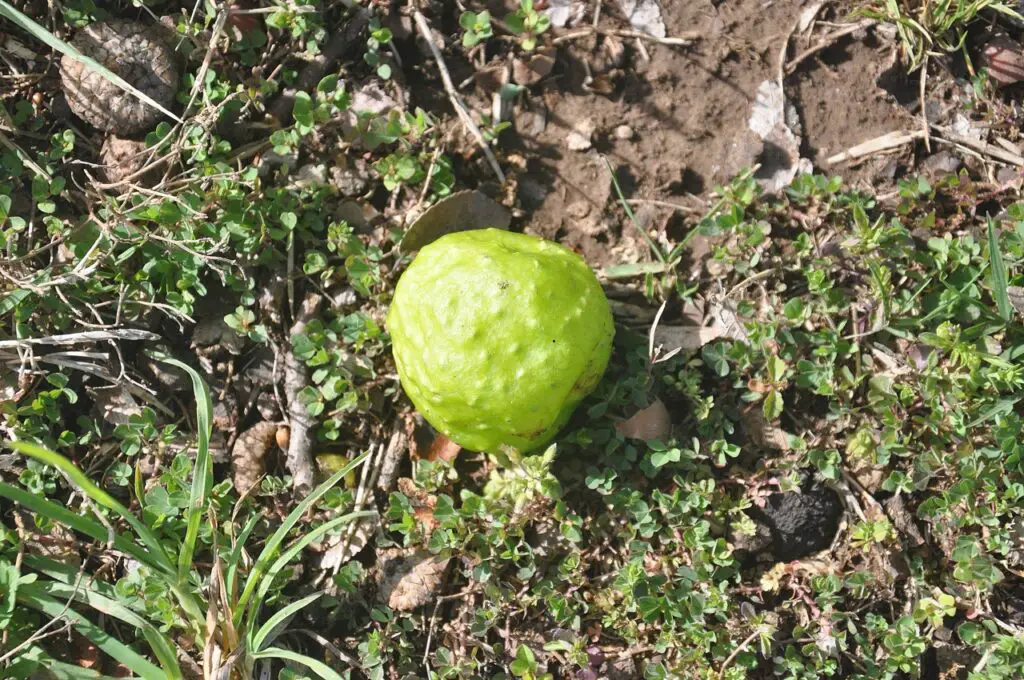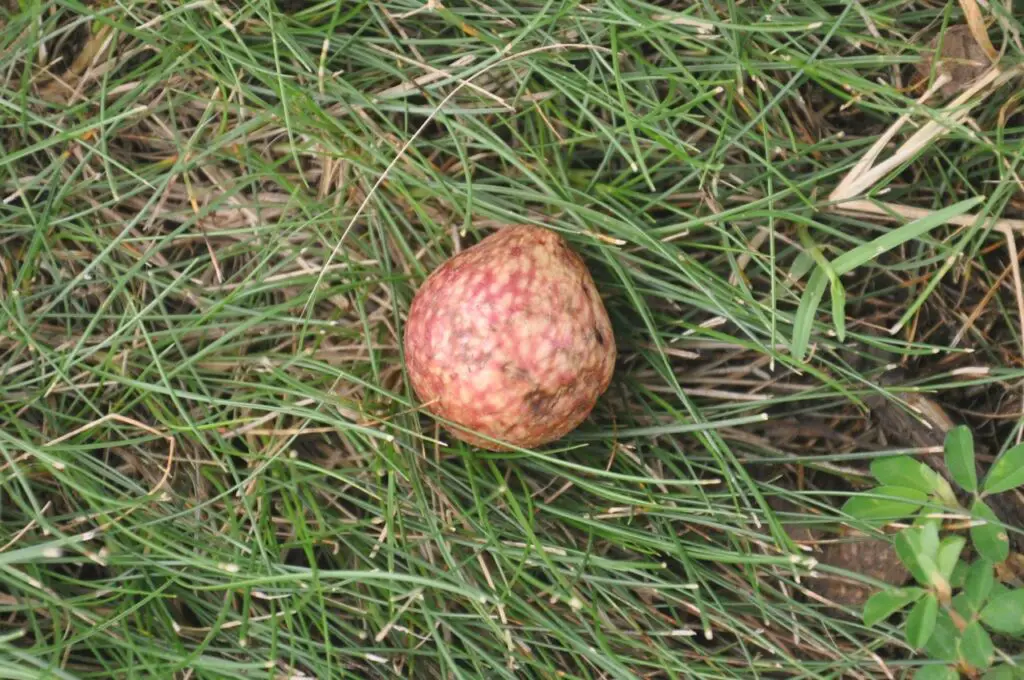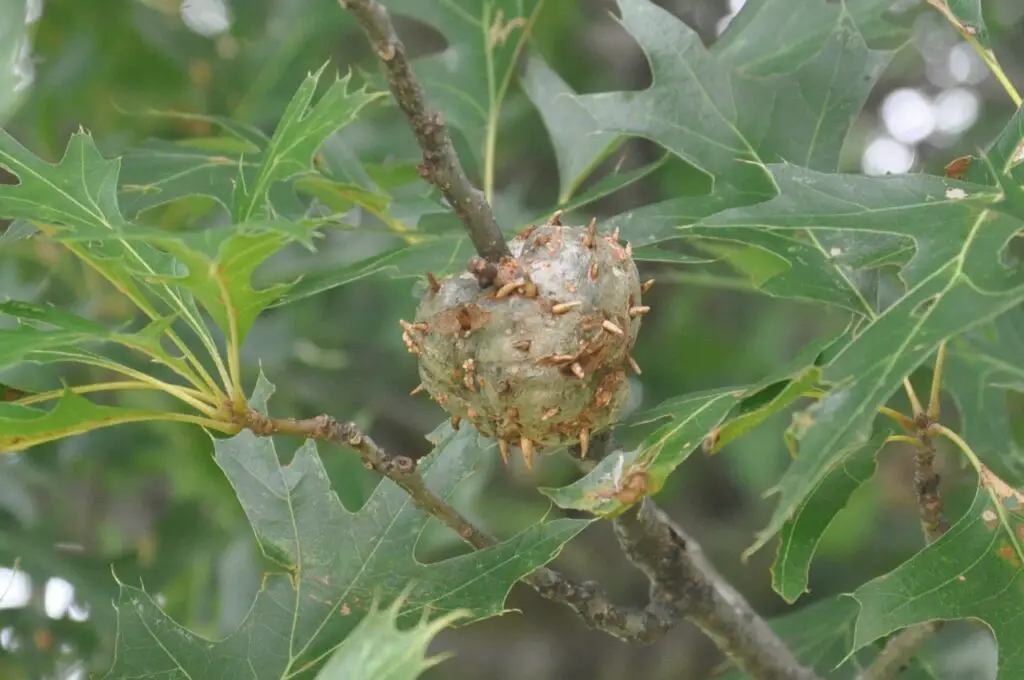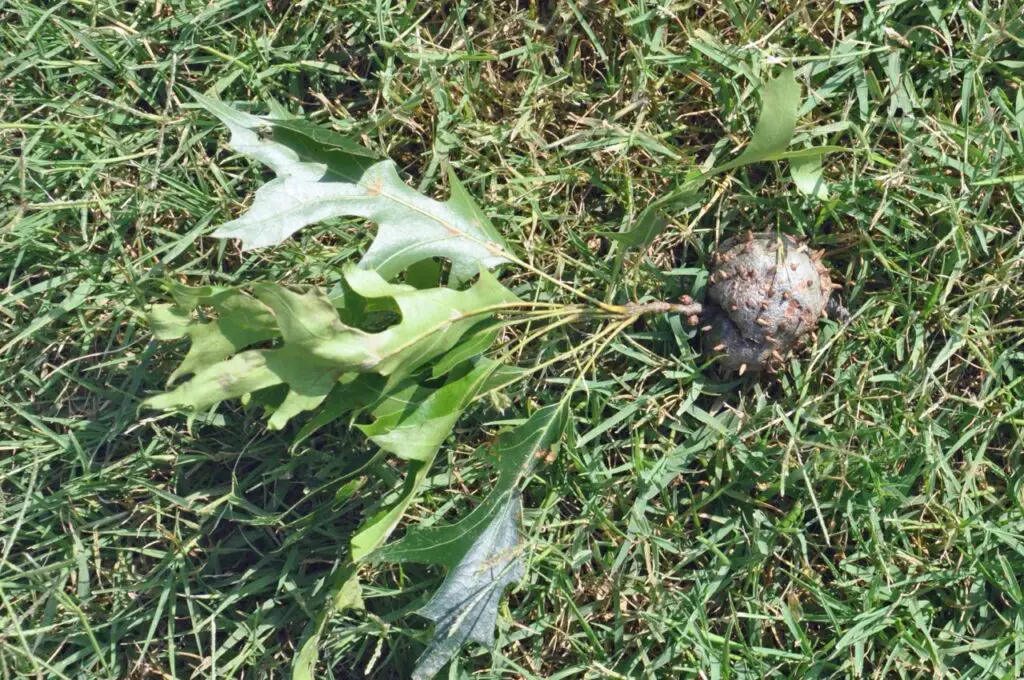Galls are abnormal growths on the leaves and twigs of many plants. The oak trees in our area have two kinds of galls, a leaf gall and a twig gall. Both are caused by tiny wasps. Galls provide food and shelter for the developing larvae.
The oak leaf gall, also called an oak apple, is spherical, 1-2 inches in diameter. A female wasp will lay an egg on a leaf bud. Chemicals produced by the larva cause a gall to form around the larva. The larva feeds on gall tissue, undergoes development, transforms into an adult and exits the gall through a tiny hole in the shell. Initially, the gall is hard and mottled but as larvae feed on the tissue it becomes filled with a spongy mass and dries to a brown paper-thin shell.




The oak twig gall, also called horned oak gall, is an irregular-shaped, golf ball-size woody growth on a twig. Spikes or horns protrude from the surface of mature galls. A female wasp lays eggs under the surface of a young twig. Chemicals released by the larvae cause the gall to form. It will take nearly 3 years for development from egg through larva to adult wasp. Larvae feed on gall tissue and adult wasps will escape the gall through the horns, chewing an exit hole at the tip.











